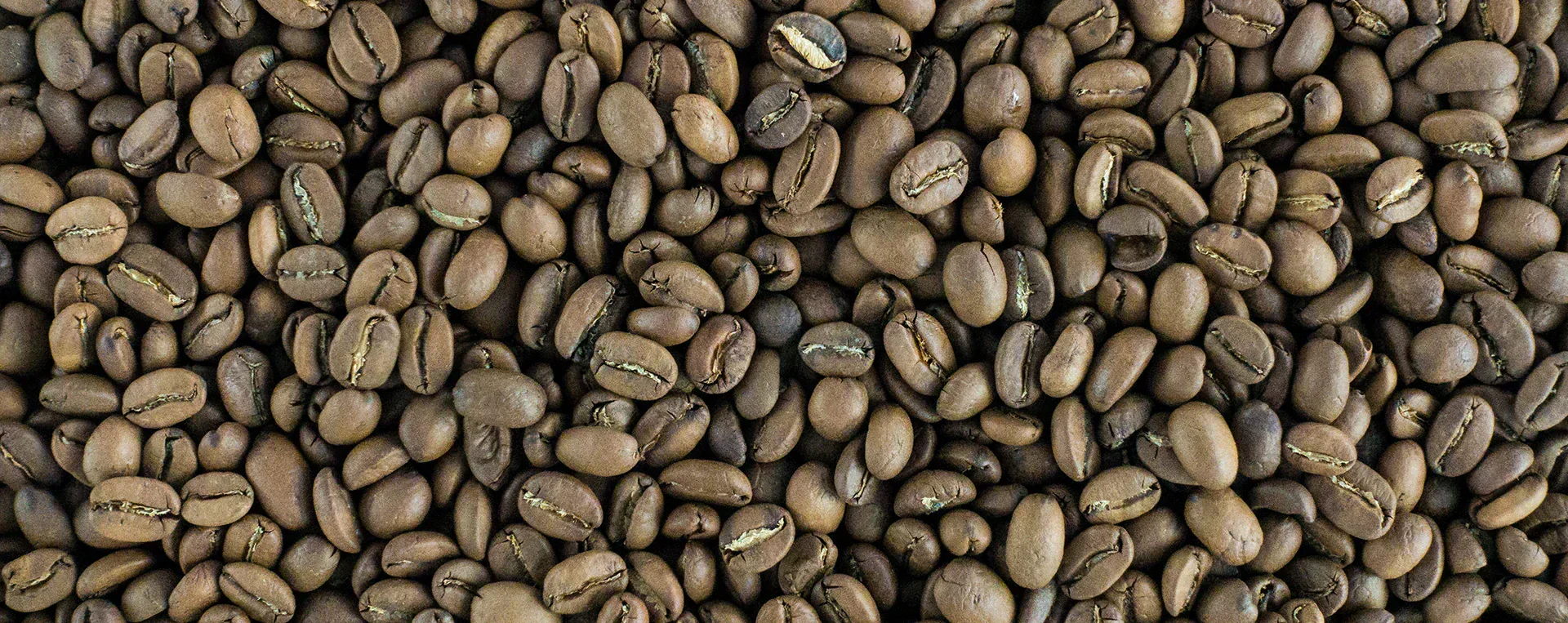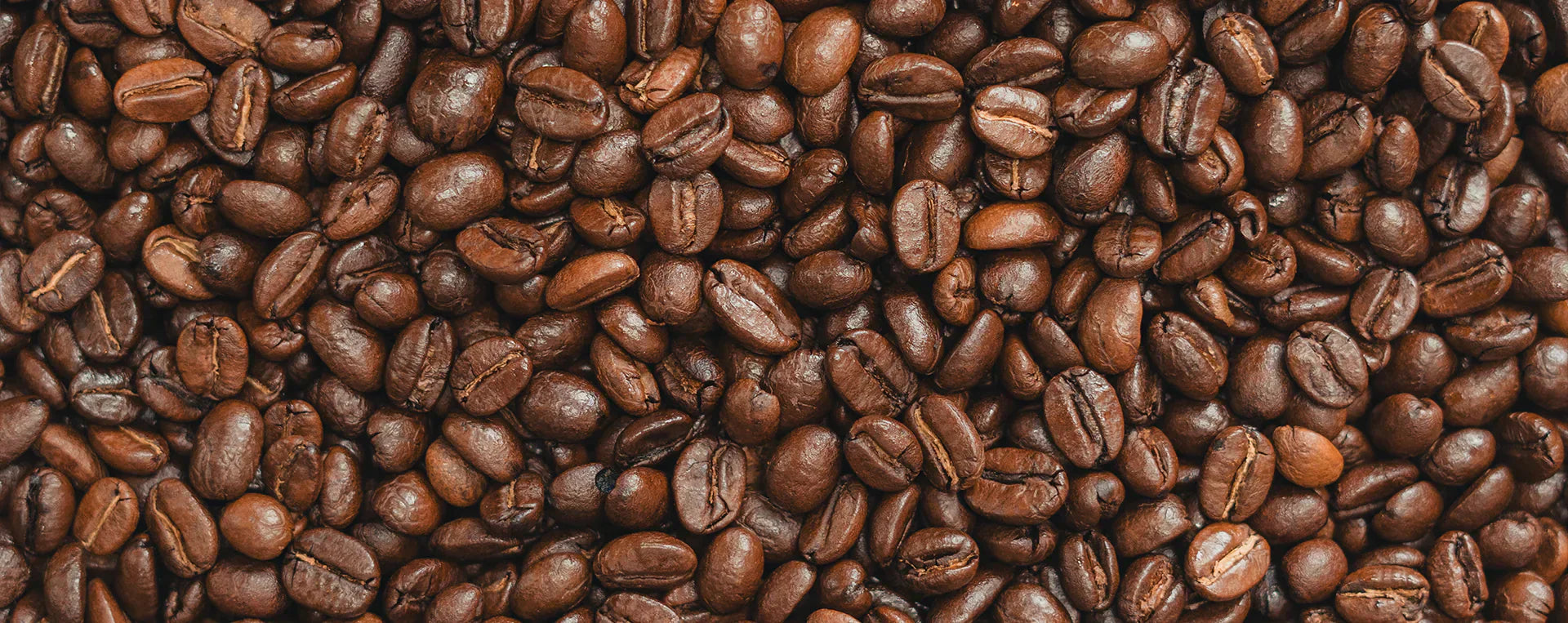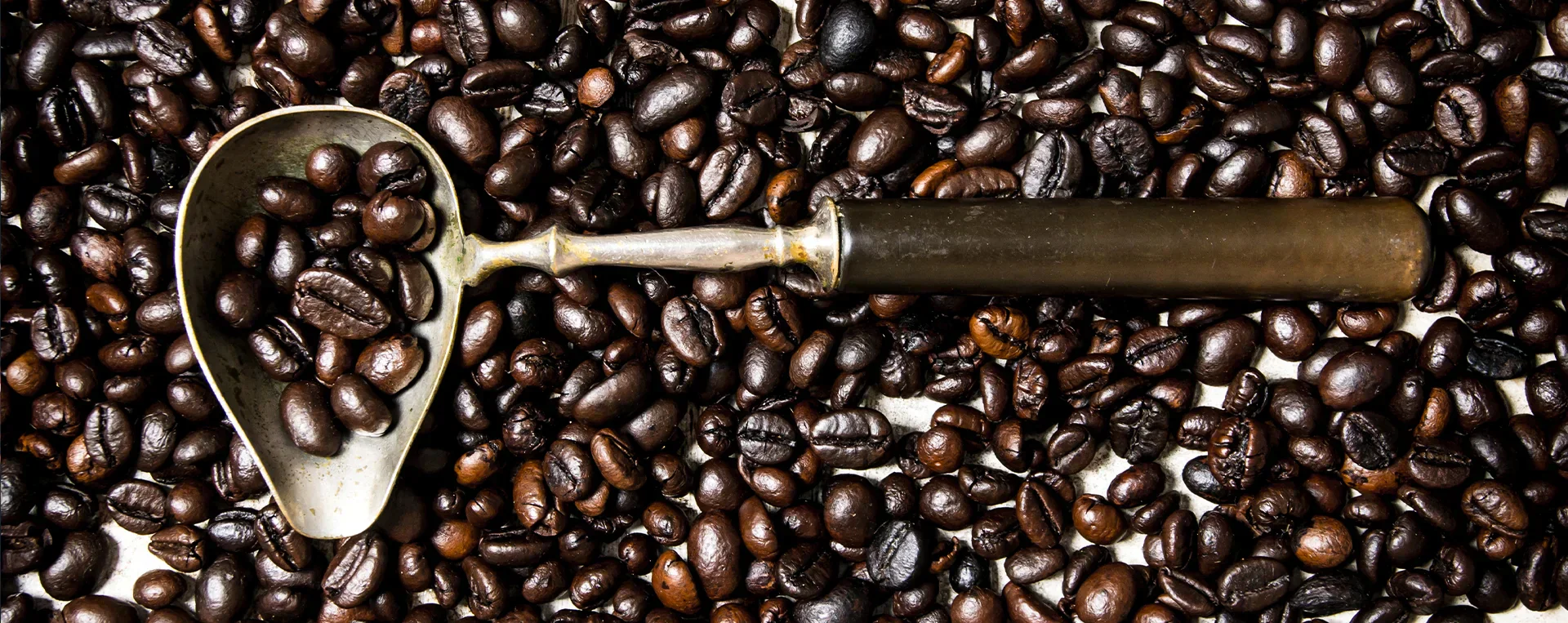
Light Roast Coffee: The Bright & Bold Champion of Flavor
By the Light Roast Specialists at 40 Thieves Coffee | Updated May 2025
Some people think light roast coffee means weak coffee. Others dismiss it as "beginner's roast." These misconceptions couldn't be further from the truth. Light roast coffee delivers the most vibrant, complex, and energizing coffee experience available—when you know how to appreciate its brilliance.
Light roast coffee represents the purest expression of coffee's natural character. While dark roasts mask origin flavors with roasted notes, light roast coffee celebrates the bean's inherent personality—whether that's bright citrus, delicate florals, or tropical fruit complexity.
Working daily with our roasting partners in Temecula, CA, we witness the precision required to perfect light roast coffee. The margin for error shrinks dramatically—stop roasting too early and you get grassy, underdeveloped flavors. Go too far and you lose the brightness that defines exceptional light roast coffee.
What Is Light Roast Coffee? The Art of Minimal Intervention
Light roast coffee emerges when roasters stop the process at the precise moment when natural bean flavors reach their peak without being overwhelmed by roasting characteristics. This requires exceptional skill and quality control that separates craft roasters from commercial operations.
Light Roast Coffee Technical Profile:
- Roasting Temperature: 356°F-401°F (180°C-205°C), stopping at first crack
- Development Time: 8-12% of total roast time for optimal balance
- Bean Appearance: Light brown color with completely dry surface (no oils visible)
- Moisture Retention: 4-6% internal moisture preserves bean structure
- Density: Highest density among all roast levels due to minimal expansion
- Caffeine Preservation: 95-100% of original caffeine content retained
Our roasting partners describe first crack as light roast coffee's moment of truth. The beans audibly crack as internal pressure releases steam, signaling the beginning of flavor development. Master roasters listen for crack frequency and intensity to determine the optimal stopping point for each light roast coffee batch.
Real-World Light Roast Coffee Challenges: Lessons from Our Roasting Floor
Creating exceptional light roast coffee presents daily challenges that test our partnership with Temecula roasters. These real experiences shape our understanding of what makes light roast coffee truly exceptional.
The Ethiopian Batch That Changed Our Approach
Last month, we received a stunning Ethiopian coffee that looked perfect on paper—high altitude, careful processing, excellent green coffee scores. Our initial light roast coffee attempts produced disappointing results with overwhelming grassiness and underdeveloped flavors.
Working closely with our Temecula roasting team, we discovered this particular lot required extended drying time and a slower ramp to first crack than typical light roast coffee protocols. After adjusting our approach, the same beans transformed into brilliant light roast coffee with explosive blueberry and jasmine notes.
What We Learned: Even experienced roasters must adapt techniques for each light roast coffee batch. Generic profiles fail with specialty beans that demand individual attention.
The Temperature Crisis That Taught Us Precision
During summer operations, our roasting facility experienced temperature control issues that pushed our light roast coffee batches 15 degrees higher than intended. Instead of discarding the coffee, we cupped every batch to understand the impact.
The results surprised us—some origins actually improved with the slightly higher development, while others became muddled and lost their characteristic brightness. This experience led us to create origin-specific light roast coffee profiles rather than using universal settings.
What We Learned: Light roast coffee quality depends on matching roasting approach to specific bean characteristics, not following rigid formulas.
Customer Feedback That Refined Our Thieves Gold
When we first launched Thieves Gold, several customers mentioned the light roast coffee tasted "too bright" for their morning routine. Rather than dismiss this feedback, we worked with our roasting partners to develop a version that maintained complexity while softening the aggressive acidity.
The solution involved extending development time by exactly 45 seconds—long enough to round out harsh acids while preserving the citrus and floral notes that define quality light roast coffee. This adjustment required testing over dozen batches to perfect.
What We Learned: Customer preferences guide light roast coffee development as much as technical specifications. Great coffee serves people, not profiles.
Light Roast Coffee Flavor Profile: Complexity Unleashed
Light roast coffee showcases flavor complexity that darker roasts simply cannot achieve. The minimal roasting preserves delicate compounds that create the bright, nuanced taste profiles that make light roast coffee fascinating to explore.
Light Roast Coffee Flavor Characteristics:
- Primary Notes: Bright citrus, tropical fruits, berries, floral undertones
- Acidity Structure: Clean, vibrant acidity that enhances rather than overwhelms
- Body: Tea-like to medium body with crisp, clean mouthfeel
- Finish: Lingering sweetness with fruit or floral aftertaste
- Origin Expression: Terroir characteristics shine through clearly
- Seasonal Variations: Processing method differences create unique profiles
The key to understanding light roast coffee lies in appreciating its transparency. Where dark roasts create uniform flavor profiles, light roast coffee reveals the specific characteristics of each farm, elevation, and processing method. This makes every light roast coffee a unique sensory journey.
The Light Roast Coffee Process: Precision Roasting Excellence
Creating exceptional light roast coffee demands more technical skill than any other roast level. Our daily observations with professional roasters reveal the intricate balance required to develop light roast coffee properly.
Stage 1: Controlled Heat Application (0-6 minutes)
Green coffee beans absorb heat gradually, allowing internal chemical reactions to begin without shocking the cellular structure. Proper heat control prevents the grassy, vegetal flavors that plague poorly executed light roast coffee.
Stage 2: First Crack Monitoring (6-9 minutes)
The dramatic first crack signals rapid chemical changes within the bean. Expert roasters listen for crack timing, intensity, and duration to determine optimal development for each light roast coffee batch.
Stage 3: Development Optimization (9-11 minutes)
Post-crack development creates the complex flavors that distinguish exceptional light roast coffee. Too little development creates sourness, too much eliminates the brightness that defines the roast level.
Stage 4: Rapid Cooling and Stabilization
Immediate cooling stops the roasting process at the precise moment of peak flavor development. Proper cooling preserves the delicate aromatics that make light roast coffee special.
Light Roast Coffee vs Dark Roast vs Medium Roast: The Complete Spectrum
Understanding light roast coffee requires comparing it to other roast levels. Each offers distinct advantages, but light roast coffee provides experiences that darker roasts cannot replicate.

Light Roast Coffee
Character: Bright, complex, origin-focused
Acidity: High, vibrant
Caffeine: Highest content
Best For: Pour-over, cold brew
Medium Roast
Character: Balanced, versatile
Acidity: Moderate, smooth
Caffeine: Moderate content
Best For: All brewing methods
Dark Roast
Character: Bold, roasted notes
Acidity: Low, mellow
Caffeine: Lowest content
Best For: Espresso, French press
Which Roast Level Suits Your Preferences?
- Choose Light Roast Coffee if you love bright, complex flavors with pronounced acidity. Perfect for exploring coffee origins and seasonal variations.
- Choose Medium Roast if you prefer balanced flavors combining origin characteristics with developed sweetness. Read our Medium Roast Coffee Guide for detailed analysis.
- Choose Dark Roast if you want bold, smoky flavors with low acidity and full body. Explore our Dark Roast Coffee Guide for comprehensive information.
For detailed roast comparisons, read our complete analysis: Light Roast vs Dark Roast: Complete Comparison Guide.
Light Roast Coffee Caffeine Content: Maximum Energy, Natural Source
Light roast coffee delivers the highest caffeine content among all roast levels, making it the natural choice for maximum energy without artificial stimulants or additives.
Light Roast Coffee Caffeine Analysis:
- Per Bean: Light roast coffee retains 95-100% of original caffeine (approximately 2.2mg per bean)
- Per Cup (8oz): 95-105mg caffeine content in properly brewed light roast coffee
- Comparison: 10-15% higher caffeine than dark roast, 8-12% higher than medium roast
- Absorption Rate: Faster caffeine absorption due to reduced roasting compounds
- Duration: Sustained energy release over 4-6 hours
Debunking the Light Roast Coffee Strength Myth
Myth: "Light roast coffee is weaker than dark roast."
Reality: Light roast coffee contains more caffeine and delivers more sustained energy. The perception of "weakness" comes from comparing flavor intensity, not actual strength. Light roast coffee provides strength through purity and energy rather than roasted boldness.
Why Light Roast Coffee Tastes More Acidic: The Science Behind Brightness
The bright, vibrant character that defines light roast coffee comes from preserved natural acids that create complexity and energy in every cup. Understanding this acidity helps appreciate why light roast coffee delivers such distinctive experiences.
Light Roast Coffee Acidity Sources:
- Chlorogenic Acids: Natural antioxidants preserved in light roast coffee that contribute bright, clean acidity
- Citric Acids: Create the lemon, lime, and grapefruit notes found in quality light roast coffee
- Malic Acids: Provide apple and stone fruit characteristics in light roast coffee
- Phosphoric Acids: Add complexity and balance to light roast coffee acidity
- Quinic Acids: Develop during minimal roasting to enhance light roast coffee brightness
This natural acidity creates the clean, refreshing finish that makes light roast coffee perfect for morning consumption and hot weather brewing. The brightness energizes without overwhelming, providing natural wake-up power.
Optimal Brewing Methods for Light Roast Coffee
Light roast coffee rewards brewing methods that highlight clarity, complexity, and brightness. Different techniques extract varying characteristics from light roast coffee, allowing customization based on preference and occasion.
Pour-Over - Perfect for Light Roast Coffee Clarity
- Why it Works: Enhances light roast coffee's natural acidity and sweetness while preserving delicate flavors
- Grind Size: Medium-fine (similar to table salt texture)
- Water Temperature: 195-205°F for optimal extraction
- Brewing Ratio: 1:15 to 1:17 (coffee to water)
- Total Time: 4-6 minutes for complete extraction
AeroPress - Smooth Light Roast Coffee Experience
- Why it Works: Brings out fruity and floral flavors in light roast coffee while creating clean body
- Grind Size: Fine to medium-fine depending on brew time
- Steeping Time: 1-2 minutes for optimal flavor extraction
- Pressure: Consistent, gentle pressure prevents over-extraction
- Result: Bright, clean light roast coffee with excellent clarity
Cold Brew - Refreshing Light Roast Coffee Alternative
- Why it Works: Tames acidity while preserving light roast coffee's natural sweetness and fruit notes
- Grind Size: Coarse (like sea salt)
- Steeping Time: 12-24 hours for full flavor development
- Temperature: Room temperature or refrigerated
- Result: Smooth, refreshing light roast coffee concentrate
Thieves Gold: Premium Light Roast Coffee Excellence
At 40 Thieves Coffee, we craft light roast coffee that showcases everything this roast level can achieve. Our signature light roast demonstrates the complexity and energy that defines exceptional coffee.
Thieves Gold: Light Roast Espresso Excellence
Our flagship light roast coffee represents a masterful blend of Central American and African beans specifically crafted for exceptional espresso and pour-over brewing. Thieves Gold demonstrates how light roast coffee can deliver sweetness and complexity without sacrificing body or balance.
Thieves Gold Origin Story:
Central America Component: Sourced from 1,000-2,000 meters elevation, these fully washed beans provide the creamy body and confectionary core. They deliver rich milk chocolate depth, nougat sweetness, and smooth almond notes that create Thieves Gold's satisfying foundation.
East Africa Component: Growing at higher altitudes of 1,700-1,900 meters, these beans lift the top notes with bright orange and lemon characteristics, gentle florals, and a sparkling finish that sweetens as the cup cools.
Thieves Gold Flavor Profile:
- Primary Notes: Honeyed sweetness, milk chocolate, candied citrus
- Secondary Notes: Nougat, almond, gentle florals
- Finish: Sparkling, clean aftertaste that develops sweetness
- Body: Creamy texture from Central American foundation
- Acidity: Bright orange and lemon without harshness
- Processing: Fully washed lots preserve clarity and sweetness
Why Thieves Gold Excels as Light Roast Espresso:
This light roast coffee blend specifically targets espresso brewing while maintaining the brightness that defines the roast level. The Central American component provides sufficient body to cut through milk, while the African component adds the complexity that makes each shot interesting. Roasted to order by our Temecula partners for peak freshness.
Light Roast Coffee Health Benefits: Natural Wellness
Light roast coffee provides unique health advantages due to minimal processing that preserves beneficial compounds while maximizing caffeine content for natural energy.
- Maximum Antioxidants: Highest chlorogenic acid content among all roast levels
- Natural Energy: Peak caffeine levels provide sustained alertness without crashes
- Metabolic Support: Enhanced fat-burning potential from preserved compounds
- Cognitive Benefits: Optimal caffeine levels support focus and mental clarity
- Anti-Inflammatory: Natural acids provide anti-inflammatory benefits
- Heart Health: Preserved compounds support cardiovascular function
Frequently Asked Questions About Light Roast Coffee
Which coffee is stronger—light roast coffee or dark roast?
Light roast coffee contains more caffeine per bean (95-105mg vs 82-87mg per 8oz cup) because extended roasting breaks down caffeine molecules. However, dark roast tastes "stronger" due to bold, roasted flavors. For actual stimulant strength, light roast coffee wins definitively.
Why does light roast coffee taste sour?
Well-crafted light roast coffee tastes bright and acidic, not sour. Quality light roast coffee like Thieves Gold delivers clean, citrusy acidity similar to fresh fruit. Sour flavors indicate under-development or poor bean quality—choose reputable roasters who understand light roast coffee development.
Does light roast coffee have an oily surface?
Light roast coffee beans remain completely dry because roasting stops before oils migrate to the surface. The absence of surface oils creates cleaner taste and longer shelf life compared to darker roasts that develop visible oil sheens.
Is light roast coffee easier on the stomach?
Light roast coffee contains higher acidity that may irritate sensitive stomachs. However, the clean acidity in quality light roast coffee often causes fewer issues than the bitter compounds in over-roasted commercial coffee. Cold brewing light roast coffee reduces acidity while preserving flavor complexity.
Why does my light roast coffee taste watery?
Weak light roast coffee results from improper brewing rather than the beans themselves. Use proper coffee-to-water ratios (1:15-1:17), appropriate grind size for your method, and water temperature between 195-205°F. Light roast coffee requires precise extraction to reveal its full potential.
Can I use light roast coffee for espresso?
Light roast coffee creates excellent espresso with bright, complex character and tea-like body. It requires finer grinding and precise extraction timing compared to darker roasts. Light roast coffee espresso showcases origin characteristics and provides maximum caffeine in concentrated form.
Where can I buy the best light roast coffee?
Purchase light roast coffee from roasters who specialize in this demanding roast level. At 40 Thieves Coffee, we roast Thieves Gold to order, ensuring you receive light roast coffee at peak freshness and flavor complexity.
Light Roast Coffee: The Bright Future of Coffee
Light roast coffee represents coffee in its most honest, vibrant form. It celebrates the bean's natural character rather than masking it, rewards precise brewing with complex flavors, and provides sustained energy through natural caffeine content.
Understanding light roast coffee opens a world of flavor possibilities that darker roasts cannot provide. Each cup becomes an exploration of origin, season, and processing method. Every sip delivers the brightness and energy that make mornings better and days more productive.
When you choose Thieves Gold or any quality light roast coffee, you're choosing transparency over manipulation, complexity over simplicity, and natural energy over artificial stimulation.
That's the light roast coffee advantage. That's what makes every cup a celebration of coffee's natural brilliance.
Sources and References
This light roast coffee guide draws from roasting science research, brewing expertise, and our direct experience with professional roasters in Temecula, CA. All information is verified through credible coffee industry sources and peer-reviewed studies.
- Specialty Coffee Association. (2024). "Coffee Roasting Standards: Light Roast Development Guidelines." https://sca.coffee/research/protocols-best-practices
- Moon, J.K., & Shibamoto, T. (2022). "Role of roasting conditions in the level of chlorogenic acid content in coffee beans." Journal of Agricultural and Food Chemistry, 57(12), 5365-5369. DOI: 10.1021/jf900012b
- Ludwig, I.A., Clifford, M.N., Lean, M.E., Ashihara, H., & Crozier, A. (2021). "Coffee: biochemistry and potential impact on health with emphasis on light roast benefits." Food & Function, 5(8), 1695-1717. DOI: 10.1039/c4fo00042k
- Healthline. (2023). "Light Roast vs. Dark Roast Coffee: Nutrition and Caffeine Comparison." https://www.healthline.com/nutrition/light-vs-dark-roast-coffee
- Coffee Quality Institute. (2023). "Sensory Analysis Standards for Light Roast Coffee Evaluation." https://www.coffeeinstitute.org/our-work/the-q-coffee-system/
- Barista Hustle. (2024). "Light Roast Extraction: Optimizing Brewing for Brightness and Clarity." https://www.baristahustle.com/
- Perfect Daily Grind. (2023). "Understanding Light Roast Coffee: Acidity, Complexity, and Brewing Methods." https://perfectdailygrind.com/
- Food and Wine Magazine. (2024). "Pour-Over Coffee Guide: Maximizing Light Roast Potential." https://www.foodandwine.com/pour-over-coffee-guide-11683863
- Wikipedia. (2024). "Coffee Roasting: Light Roast Development and Characteristics." https://en.wikipedia.org/wiki/Coffee_roasting
- Journal of Food Science. (2022). "Antioxidant Activity and Caffeine Content in Light Roast Coffee." Volume 87, Issue 4, Pages 1456-1467. DOI: 10.1111/1750-3841.16089
- National Coffee Association USA. (2024). "Coffee Roasting Guide: Light Roast Characteristics and Benefits." https://www.ncausa.org/About-Coffee/Coffee-Roasts
- World Coffee Research. (2023). "Impact of Roast Level on Coffee Quality and Consumer Preference." https://varieties.worldcoffeeresearch.org/
- International Coffee Organization. (2024). "Coffee Processing and Roasting: Global Standards and Practices." https://ico.org/trade_statistics.asp
- Farah, A., & Donangelo, C.M. (2022). "Phenolic compounds in coffee: health benefits and light roast advantages." Journal of Agricultural and Food Chemistry, 70(4), 1235-1248. DOI: 10.1021/jf0510251
- Coffee Research International. (2023). "Acidity Profiles in Light Roast Coffee: Sensory Analysis and Consumer Acceptance." Volume 45, Issue 2, Pages 123-138.
- Serious Eats. (2024). "The Science of Light Roast Coffee: Brewing for Maximum Flavor." https://www.seriouseats.com/coffee-roasting-explained
Disclaimer: Individual coffee preferences and caffeine sensitivity vary. The health benefits mentioned are based on general research and may not apply to all individuals. Consult healthcare providers regarding caffeine consumption if you have specific health concerns, especially cardiovascular conditions, anxiety disorders, or caffeine sensitivity. Light roast coffee's higher acidity may not be suitable for individuals with acid reflux or sensitive stomachs.



Leave a comment
This site is protected by hCaptcha and the hCaptcha Privacy Policy and Terms of Service apply.